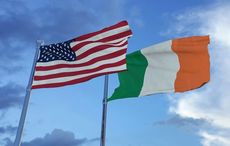Not many of us remember much from the first few years of our lives, but with thanks to parents, family and friends with good memories, not to mention plenty of baby photographs, the majority of us are lucky to know where and how we spent the years before our proper memories begin.
This wasn’t the case for Kari Rovall from Ballinteer, Co. Dublin. Having being adopted and raised in Sweden, she relocated to Ireland some years ago, never knowing anything about how she came to an orphanage in her infancy.
Her early childhood remained a life-long mystery, until she was 64 years old and received a letter containing the first photograph she had ever seen of herself as a baby. The photographers? Nazis.
Beginning a quest to unearth the truth of her own history, Kari discovered that she had been born as part of the Lebensborn or “the spring of life” program, established in Nazi Germany for the purpose of creating a so-called Aryan race. This “master race” plan was a breeding program churning out batches of blond-haired, blue-eyed children who were set to become the leaders of the Third Reich.
The Lebensborn program, a secret SS project, was the idea of Heinrich Himmler, a man obsessed with the concept of a “master race.” He is quoted as once saying, “Should we succeed in establishing this Nordic race, and from this seedbed produce a race of 200 million, then the world will belong to us.”
The program ran alongside the “Final Solution,” the brutal massacre of Jews across Europe as Nazi Germany planned to restock the continent’s population with their own Aryan race.
Traveling outside of Germany to Scandinavian countries, Nazi soldiers impregnated women who met the perfect Aryan criteria and wished to meet and have children with SS officers, including Kari’s mother.
When she was 10 days old, Kari was packed into a crate and transported to Germany, where she was kept in a Lebensborn home called Hohehorst.
When she was one year old, the Second World War ended and Nazi Germany, “the Final Solution” and Lebensborn were defeated. The children previously classed as the leaders of the “master race” were now outcasts, a horrible memory of an unforgivable system of murder and unnatural selection.
Hidden in an attic with other children of the Lebensborn project, Kari was abandoned. Rescued by the Red Cross, she spent the next few years in an orphanage before being adopted and moving to Sweden.
Despite researching her past in her early twenties and eventually meeting with her biological mother in Norway, Kari spent the majority of her life without any knowledge of her unvolunteered involvement in the program until the letter arrived at her Dublin home.
Making contact with journalist Naomi Linehan following a talk at Irish Countrywomen’s Association meeting, the pair have since delved into the hidden history of Kari’s life and chronicled her search for answers in the book “Nowhere’s Child.”
“Kari Rosvall was just an ordinary person, going about her day,” Linehan wrote in the Irish Times. “We may have passed her in the street, or in the shops, not knowing the story she had to tell. If there is something we can learn from 'Nowhere’s Child,' it is that history is all around us. It is not some dusty thing from the past. It is a living thing.
“History is in people. We just need to take the time to stop and ask people what they have experienced, and how they feel about it all. We might just be surprised at what they have to say.”
H/T: the Irish Times
* Originally published August 2015.




Comments